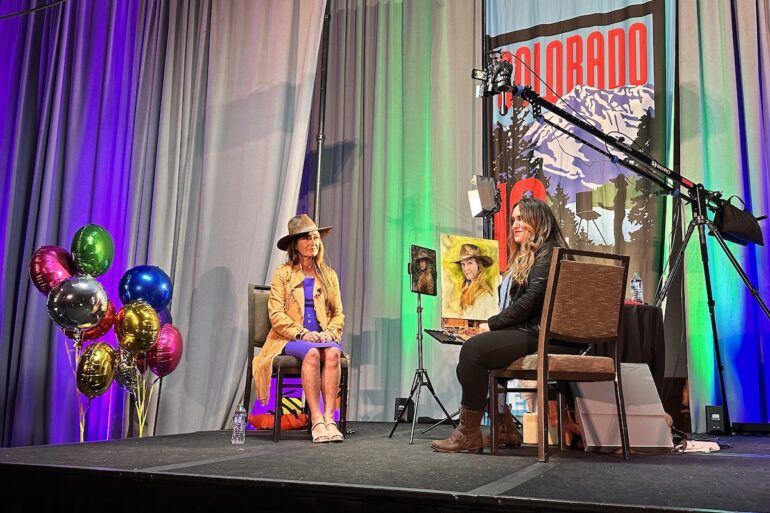
This post is also available in:

Celebrating the official opening of the 10th edition of the Plein Air Convention and Expo (PACE) was the presentation of the Lifetime Achivemet Awards that took place in the evening and was preceded by country music by a musical trio consisting of a banjo, a guitar and a cello: “quite an unusual element the latter for country music,” my new friend who knows her way around country music confided to me. Accompanying the musical trio was an extraordinary gospel music choir.
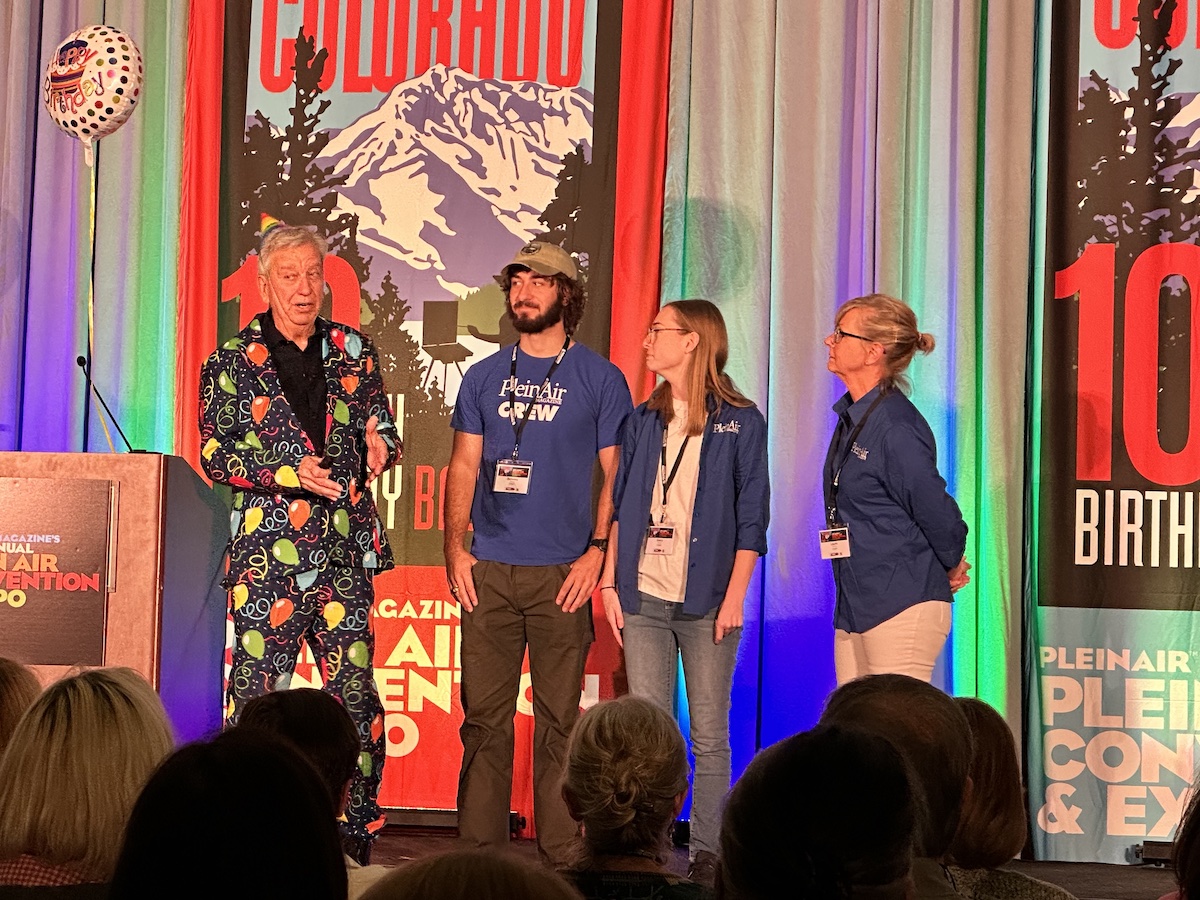
These premises, coupled with Eric Rhoads’s irony, celebrated the convention’s cheerful start: Rhoads first tried his hand at copying the feats of a clown and then dished out the rich prizes to participants in the phantom chair game.
Those who know Eric Rhoads know that his showman’s spirit is a boon to the community of “PACERS” -affectionate nickname by which PACE participants are referred to- who had the pleasure of meeting both his wife -to whom he has always given credit for initiating him into painting- and two of his three children. A source of great pride for Rhoads, who introduced his micro-family group to the very large family of artists who accompany him to every event.
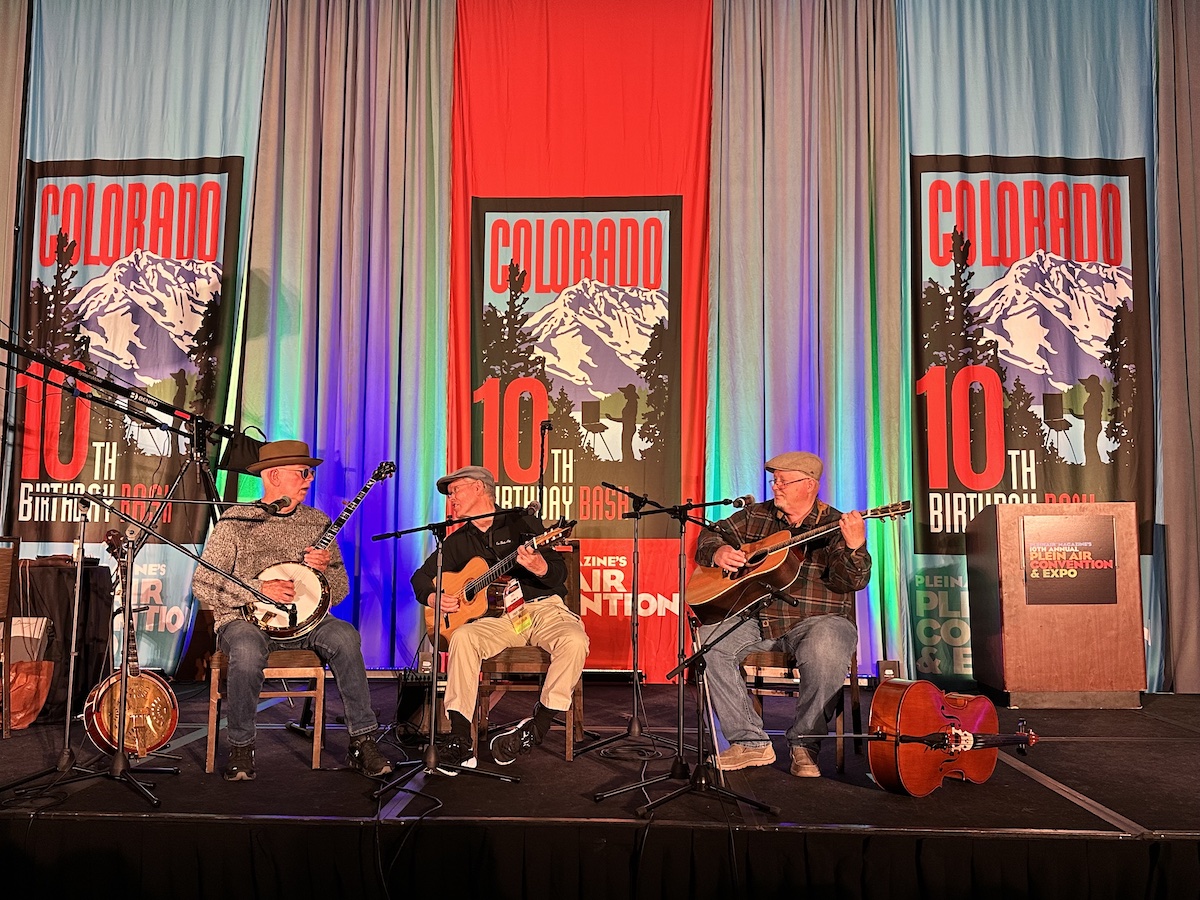
The mood turned more serious with the change of clothes by Rhoads who, along with his longtime collaborators -Kelly Kane and Cherie Dawn Haas- set aside the festive costume for attire worthy of the presentation of the “Lifetime Achievement Award” winners: Charles Warren Mundi, known to all as C.W. Mundi, and actress and artist Jane Seymour.
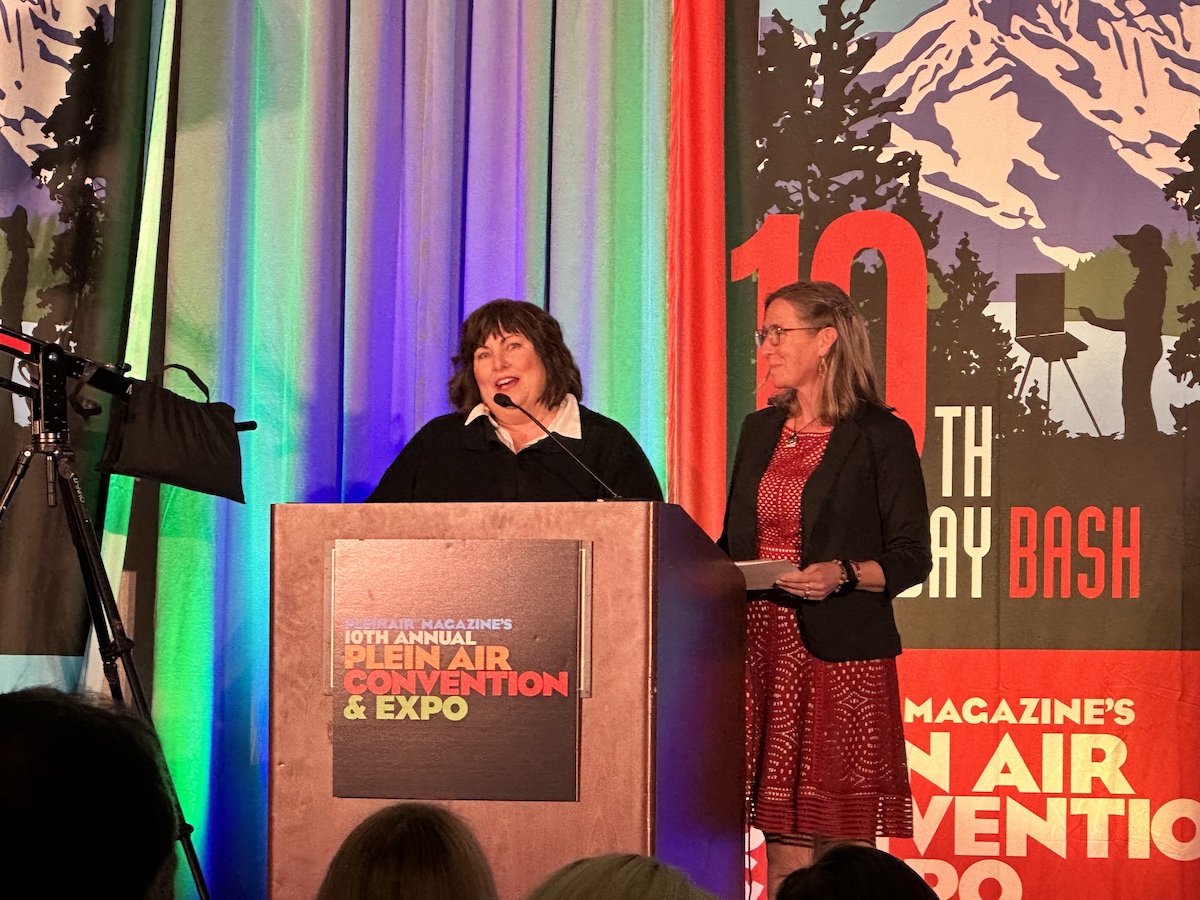
Both honorees, whose lives were recounted in the dedicated short videos, were recognized for the distinct ability with which they have elevated the spirit of art: through a prestigious artistic journey filled with awards for C.W. Mundi who has found in art a way to encourage people; and for the outreach with which Jane Seymour, through her notoriety, has helped spread plein-air painting, a tool that has enabled her to cope with painful life experiences from which she has emerged victorious in her own right.
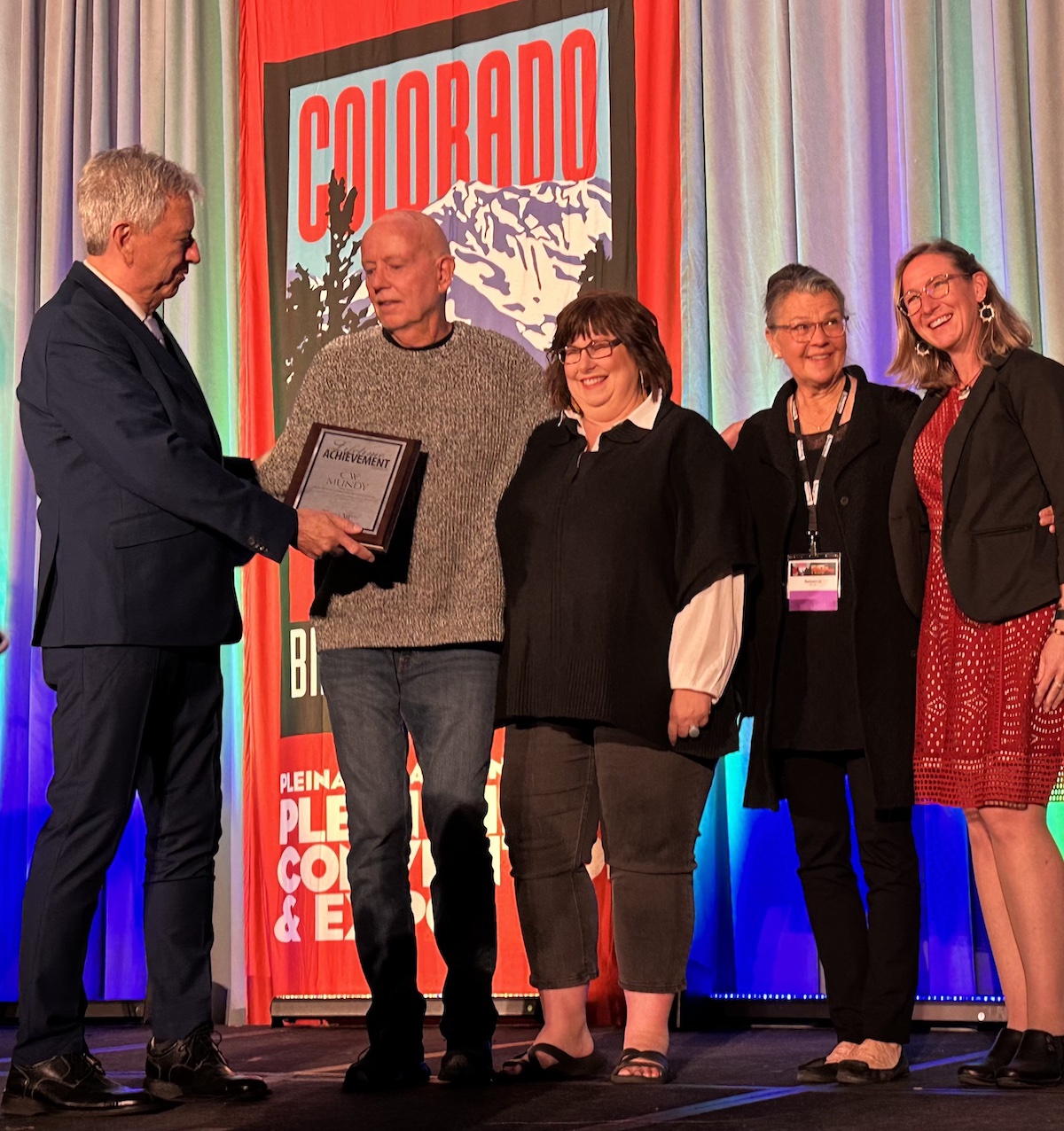
Complementing the extraordinary duo, who spoke to the audience with open hearts, recounting anecdotes and glimpses of lived life, was the presence of Michelle Dunaway who is linked to Seymur by a long friendship that began with art classes. A relationship that has cemented over time by sharing art sessions attended by some of the most important contemporary artists, including Richard Schmid. Talking about Richard Schmid and his particular approach to art as well as his teachings is always a source of emotion for Dunaway: his favorite pupil and repository of his knowledge who credits her Master, among others, with educating her in the emotional approach that is established between the artist and the model through dialogue during the posing sessions. The same approach counts Dunaway took a live portrait of Jane Seymour at the close of the first day of the convention.
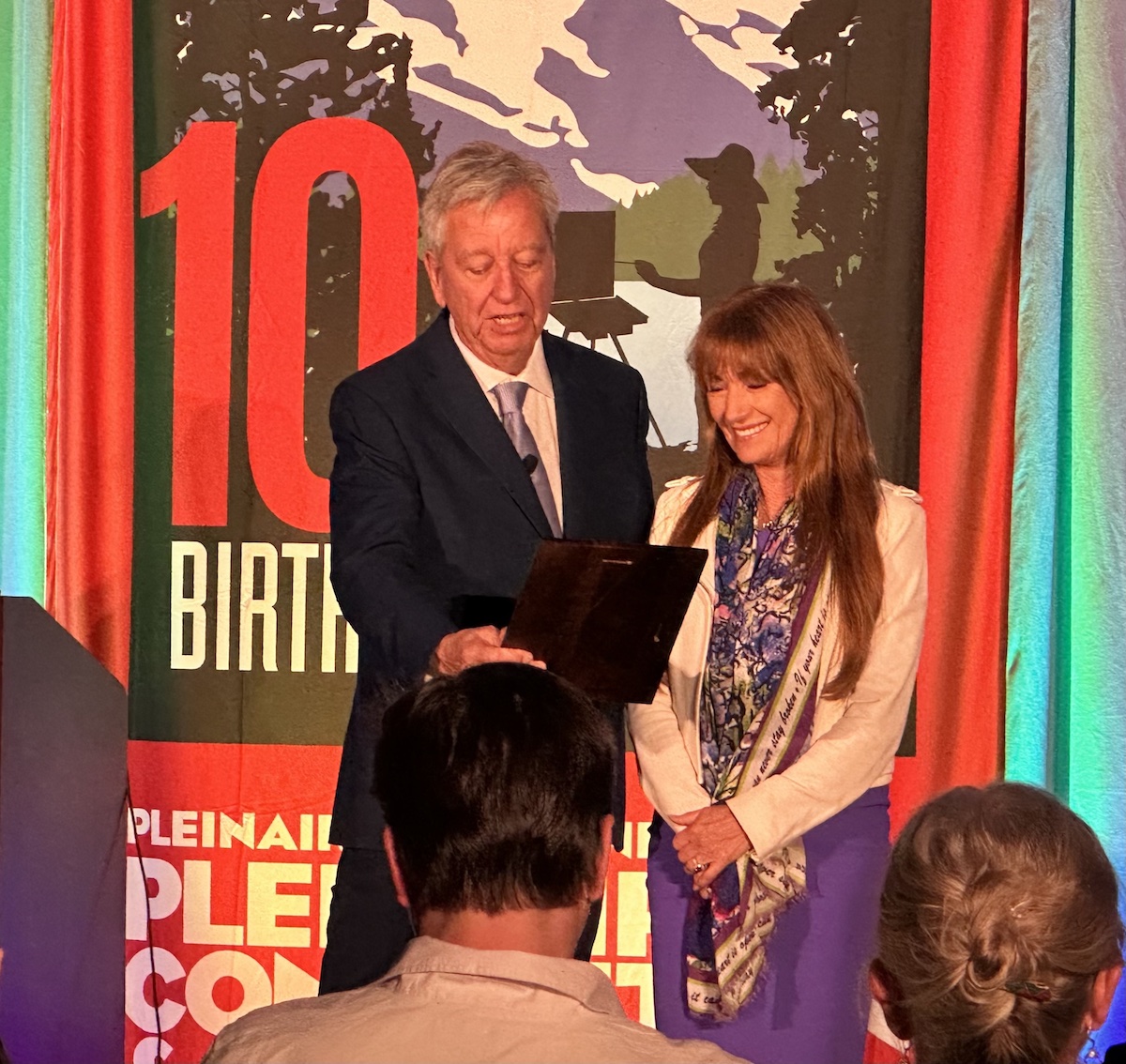
But the evening celebration was only the end of a long demonstration day in which Lori Putnam continued the demonstration session begun yesterday while: Currie Curran, Barbara Tapp, John Taft, Bruce A. Gomez and Judd Mercer, in the basic course covered the basics to be put into practice in the outdoor sessions that will see participants engaged for five long days starting tomorrow. Faculty members, each specializing on a specific technique, addressed key concepts related to plein air composition.
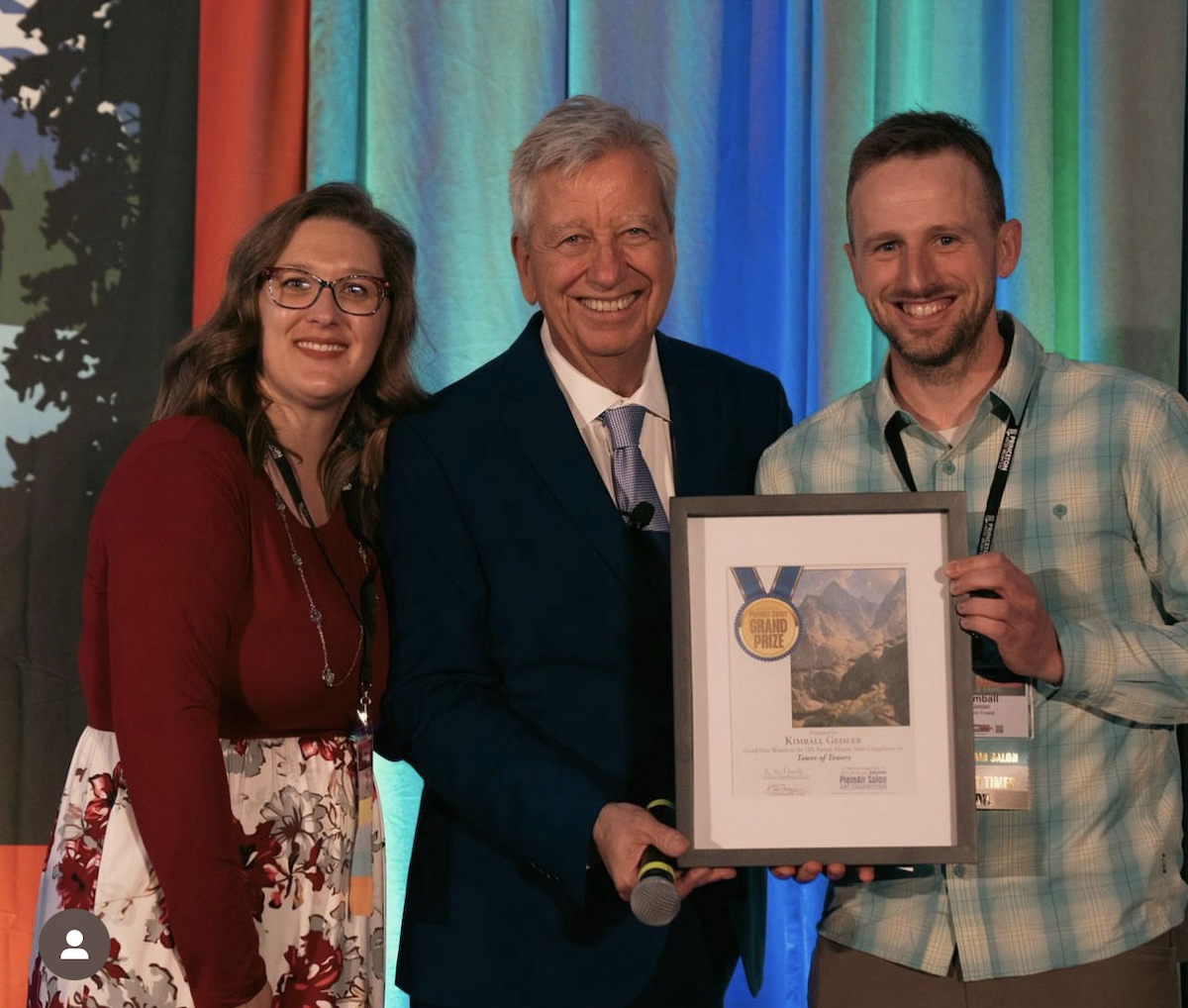
The purpose of the basic course was in fact to offer the fundamentals of plein air painting, not only with reference to the pivotal factors that underlie the compositional rules -hue, chroma and values- whose importance is common regardless of artistic technique also by highlighting the factors to be taken into account during outdoor sessions, in which climatic events play a fundamental role and it is therefore useful to be prepared for any eventuality.
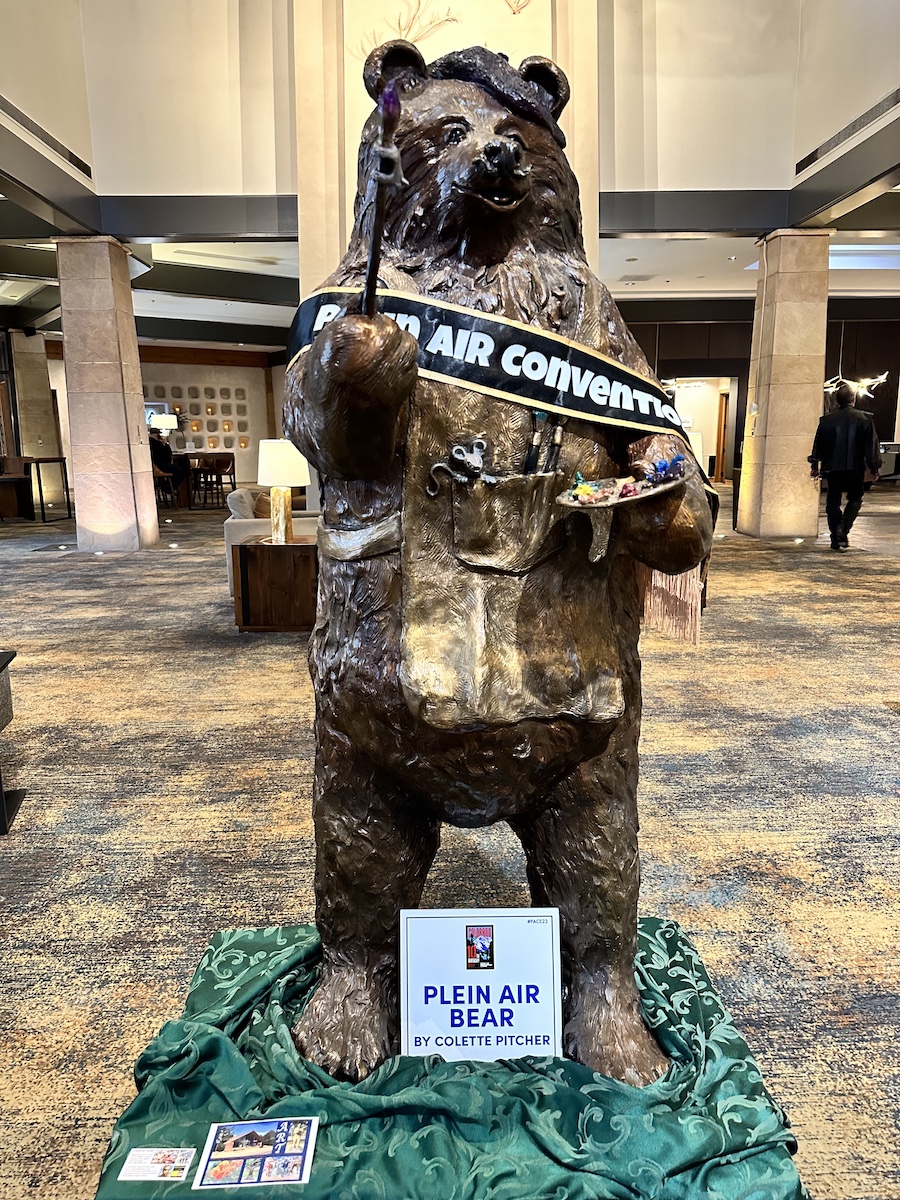
Barbara Tapp, an Australian artist specializing in watercolor, explained the materials needed in field painting, specifying how the first major challenge of plein-air painting is to identify the subject to be depicted: “There is a whole world out there to be discovered and you must not be overwhelmed by the complexity of the choice. You just have to sit and observe while breathing deeply,” said the artist for whom the constant practice of live painting is the best tool for building the sense of confidence that finds its greatest expression in the subject that best offers the opportunity for expression.
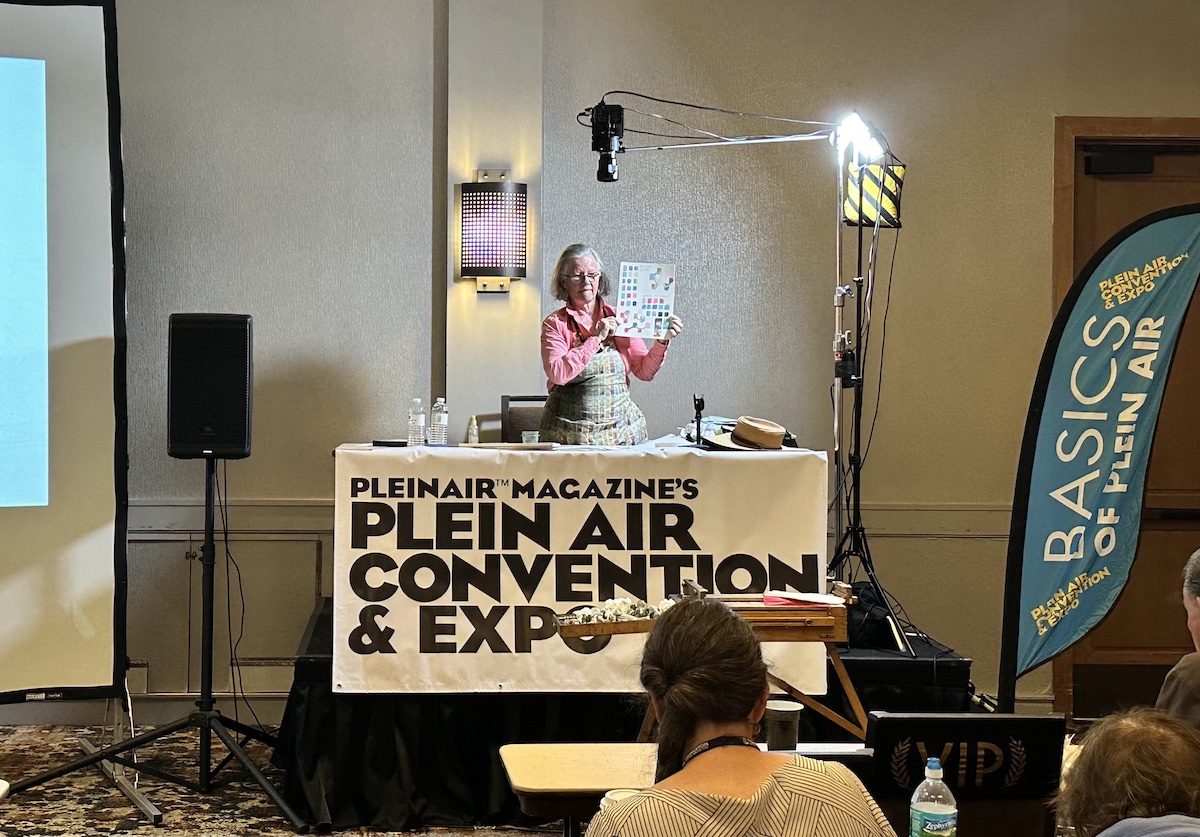
John Taft, an artist working primarily in oil, in the session ” The Geometry of the Landscape” reiterated the importance of making thumbnails and preparatory sketches. Through the schematic representation of compositional elements, he related the artist and the perception of light based on compositional elements, including: distance, sky, ground and “uprights,” heights, consisting of trees, for example. Taft reiterated the importance of simplifying tonal values by specifying that the principle to be followed is always the same:” different angles have different tonal values “Different angles has different values,” said the artist.
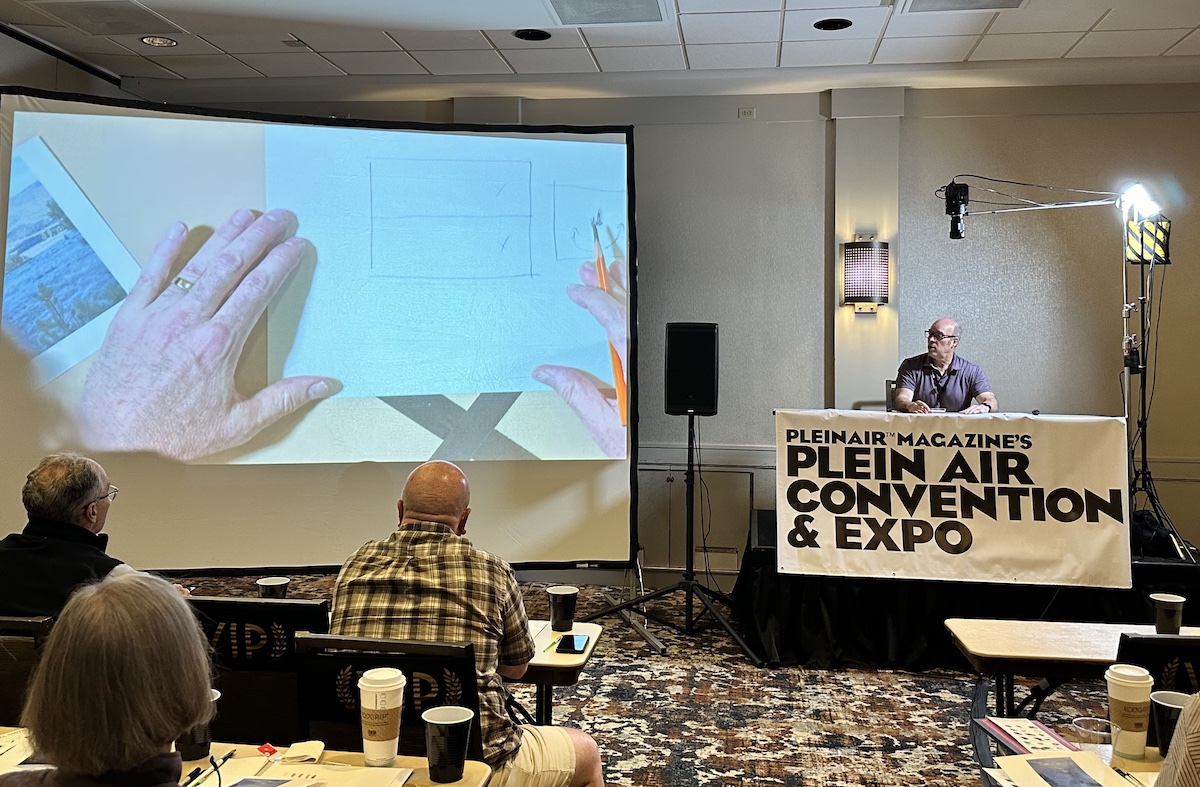
The frenetic Bruce A. Gomez in the pastel demonstration session entitled: “Diagonal and Strong Lines” established through the making of a basic grid on that established composition from large tonal shapes made directly with color. Gomez stated that : “You have to find your intimate path, and to do that you have to sacrifice something.” Gomez argues that building angles, which is a “considerable compositional opportunity,” allows for effective and surprising compositions.
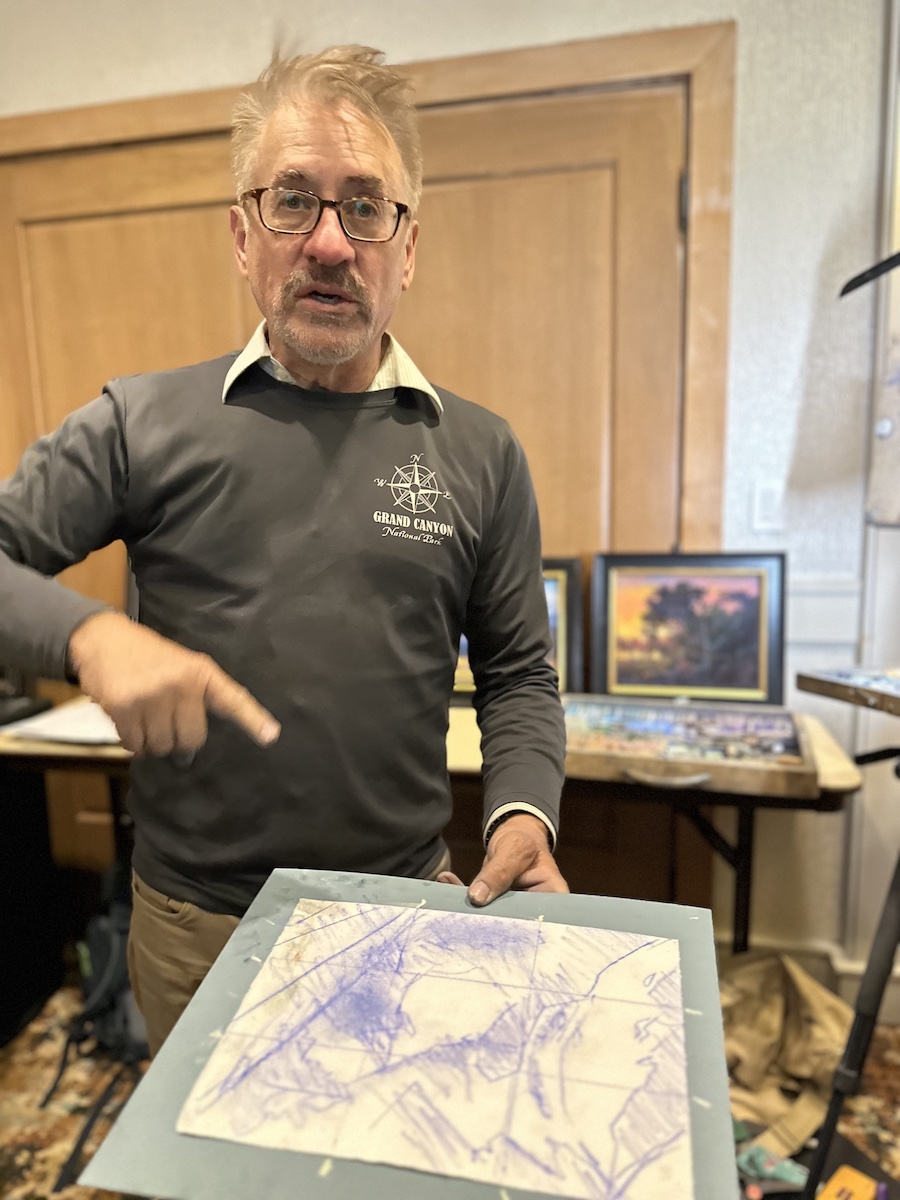
Curran, who works primarily in oil and acrylic in the demonstration session based on the differences between the two mediums showed the peculiarities of both techniques by reiterating that tonal values are much more important than chromatic values and therefore it is useful to begin by making monochromatic compositions based on the scale of tonal values. “Having internalized this concept, it is possible to indulge in the use of colors,” the artist argued.
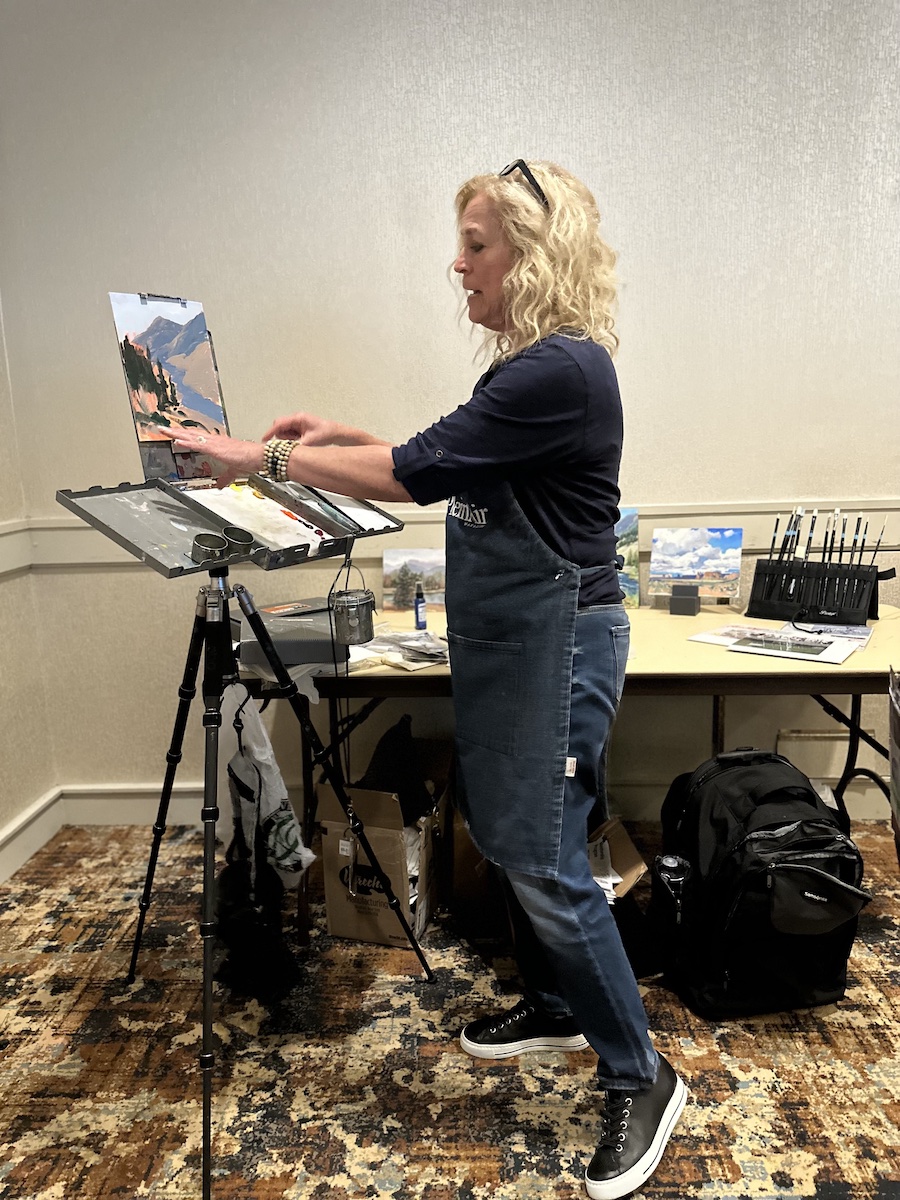
Artist Judd Mercer, who works in gouache and oil, is familiar with the Rocky Mountains and the various striking views of this land because he was born and raised nearby. Therefore, no one better than he could offer technical and informational insights needed to best capture the compositional elements of the scenery that will present itself to participants in the days to come. “There is a lot of information that we want to put into the composition, and the compositional choice that each person is required to make is the biggest challenge for an artist,” said the artist, who provided useful elements for optimizing the compositional process in the evocative mountain landscapes of the Rocky Mountains, in which the human eye tends to get lost among the thousands of visual stimuli.
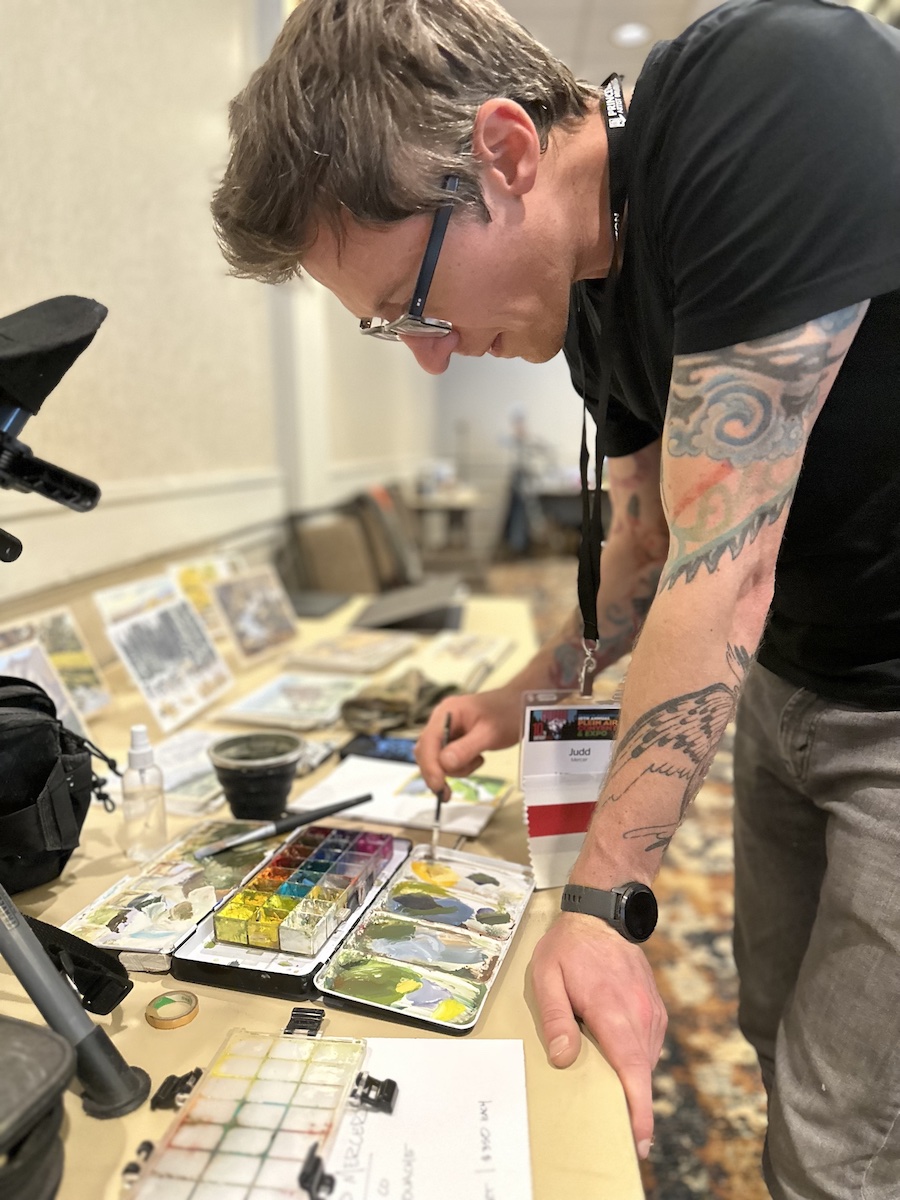
Artist Coral Bretzke, has created a nighttime scene from a work he has done in the past and from photography he personally took at the site. Known and renowned for nocturnal compositions Betzke specified that in making a night scene: ” Nothing can be more brighter then the light source” which can be offered for example by street lamps.
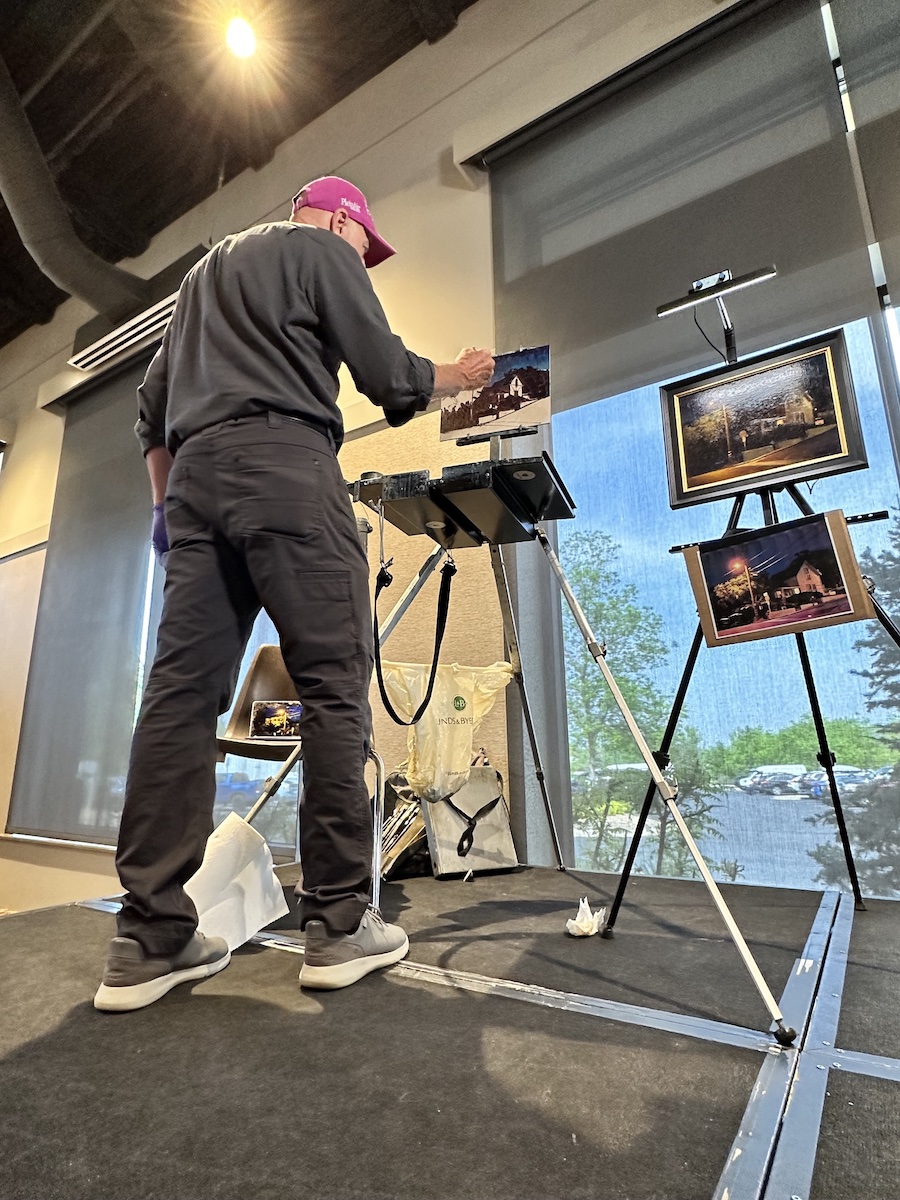
The day ended with a festive Cocktail Party attended by the many participants and faculty members featured in the tenth edition of the event who will travel to the first outstanding location of the tenth edition of PACE tomorrow after the daily demonstration sessions: the City of Golden.
(On the title, Michelle Dunaway doing a portrait of Jane Seymour.)
